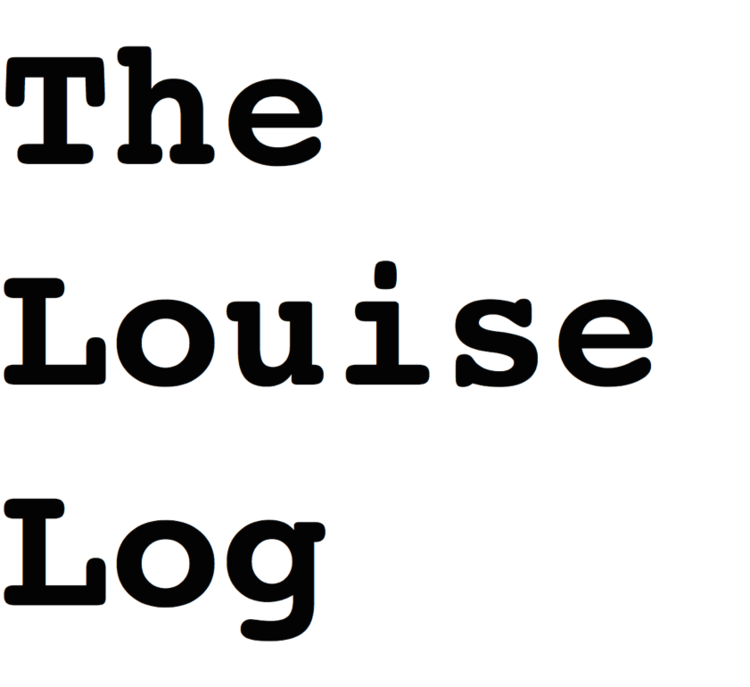This blog was started as a way of keeping you, dear reader, up to date on my efforts to get The Louise Log out to a wider audience. (The urgency to reach more viewers is financial - this show needs to become self-sustaining in order to continue.)
I thank you for giving me a wide berth as I’ve gone down meandering paths into my past life, trying to see if there’s some obvious pattern at work here and, if so, how I might be able to break it.
The good news is that, in spite of me and my personality still at the helm, we have a very exciting plan in the works which I’ll be able to say more about in the next week or so.
Until then, here’s some of what I’ve learned from making this show.
I used to routinely face a wall of anxiety too tall to see over and too wide to get around. The only possible way to deal with this is, obviously, was avoidance, otherwise known as procrastination. As you may have read, in what is by any standards an epic mastery of this approach to life, I managed to stretch out the rewrite of the script for my ‘second feature’ for SEVENTEEN YEARS. Making The Louise Log taught me a number of tools to deal with this demon.
Tool #1 is limitations. Having ‘wasted’ so many years on one miserable script, I was like an over-primed pump ready to explode. It helped that I was fifty-five years old and well aware that people start dying at that age. So before mine got me, I started to set my own deadlines. Mr. Green had been writing a blog once a month for years. I decided that I’d make one video a month.
Tool #2 is a variation on Tool #1: Start where you are with what you have.
In film, I’d worked with Camera Operators and Directors of Photography. I knew nothing about shooting and less about video. Furthermore, in 2007, no self-respecting filmmaker was shooting video with a camcorder and putting it up on YouTube. Fortunately, as previously outlined, I had the gift of desperation. There was the family camcorder which, guess what? Like cell phone cameras, camcorders are point and shoot. A two year old could press the two buttons and probably get something worth looking at.
I’d worked as a film editor and had always been intimidated by video editing. Apple’s imovie is so simple, two year olds can now edit the video they’ve shot. I went to the Apple Store’s One-to-One sessions and learned imovie until I broke it with overly complicated sound tracks. Then I learned Final Cut Pro.
Which brings me to Tool #3: Baby Steps
If the first episode had been with more than one actor, I probably would have broken out in hives and cancelled the shoot for not being able to breathe.
But by the fourth episode I was working with two actors. By the fifth episode, there were four actors (two of them children), props, several shots crossing the very busy Seventh Avenue and a rented location (the local public school),
By episode forty-three we had four SAG actors in their underwear, a fifth (fully clothed) SAG actor 900 miles away on Skype and a crew of five.
Tool #4: Practice Makes Perfect. Well, yes and no.
On the one hand, working constantly, my craft exploded. I learned more making The Louise Log than in making all my other films combined.
But a great thing about digital technology is that you don’t have to get it right the first time. Or even the seventeenth. For Season One, we didn’t have a professional sound mixer on set. The sound for the first seventeen episodes was whatever the camcorder picked up. In the episode in the Principle’s Office (12), the air conditioning noise was so invasive, it ruined an otherwise strong episode. Yes we had to lose thousands of views, but we took down the original uploads of almost all the sub-par audio, dubbed them and re-uploaded a lot of Season One.
Tool #5: Collaborate and Ask For Help
Digital technology makes it possible for one person to do almost every job. Please don’t ask how I know this. Unfortunately, the chances of a one-person project reaching a wide audience are greatly diminished. If only for the (extremely important) fact that the marketing and promotion will be easier if a lot of people are involved and invested, work with a group.
Tool #6: Story Trumps All
Make sure the script is strong or make sure you have the leeway to salvage it in the editing if it isn’t. A voice-over saved us more times than I can count.
Don't miss out! Special bonus delivered INSTANTLY if you click the 'Like' button.

